Perhaps the most iconic kind of Scottish biscuits, Petticoat Tails Shortbread is best served with a cuppa or – better yet – a nip of whisky!


It’s no secret that I love shortbread. Everyone loves shortbread though, don’t they?
I’ve already shared Granny’s famous Shortbread recipe, as well as my all-time favourite shortbread recipe; Highlander Shortbread. Not to mention Dark Chocolate & Orange Shortbread, and Tantallon Cakes, which are both twists on your traditional Scottish shortbread.
Today though I am bringing you something a little bit different. Perhaps one of the most globally recognisable forms of shortbread… Petticoat Tail Shortbread.
Your same delicious shortbread base, made in one giant biscuit and cut into generously sized individual wedges. Best served with a cuppa or ip of whisky, especially at Hogmanay or on St Andrew’s Day.

Why is it called "Petticoat Tail" Shortbread?
The name “petticoat tail shortbread” comes from the way the shortbread is cut into triangles & will usually have decorative edges, which resembles the silhouette of a petticoat. Although if you asked my kids, they’d probably tell you it’s really called pizza slice shortbread!
How to make Petticoat Tail Shortbread?
Like most shortbread recipes, it’s super easy to make Scottish petticoat shortbread tails. You start with the traditional base of butter, sugar and flour, to make a biscuit dough. The dough for this shortbread recipe is a little bit softer than our normal shortbread dough, due to the different method of baking – but don’t worry it tastes just as good (if not better).
The most complex part of making petticoat shortbread tails is in the shaping of the dough, and even that is incredibly easy! You simply press your dough into your tin, adding a decorative edge if you wish. You’ll gently score your triangles on to the top, and prick the shortbread before baking (no need to chill). This is a low and slow bake, so you have to be patient, but it is most definitely worth the wait!
Once baked, you cut the triangles whilst still warm & in the tin, then finish with a sprinkling of sugar. You want to leave the petticoat tails to cool completely in the tin before enjoying.
Do you need a mould for Petticoat Tail Shortbread?
No, you don’t need a shortbread mould to make petticoat tail shortbread. You do get some wonderful shortbread moulds and if you do happen to have one, by all means go ahead – this recipe is ideal for them. But it is by no means essential.
This recipe for Scottish petticoat tails shortbread uses a loose-bottom tart tin. Alternatively you could just use a loose-bottom cake tin, if you aren’t fussed for a decorative edge. Just be sure to use a loose-bottom tin to avoid the risk of breaking your shortbread when it comes to removing it from the tin.

Ingredients:
Sugar is an essential part of any shortbread recipe and this one is no exception. Caster sugar is preferable as it is a bit finer than a granulated sugar, so it mixes beautifully into your dough. It is also perfect for a final dusting on top of your shortbread to finish.
However, butter can be expensive, people don’t always want to consume dairy, sometimes you just don’t have any to hand… In those cases, margarine is a perfectly good substitute. In fact, if you look at the ingredients for most shop-bought shortbread, unless it states it is an “all-butter” shortbread, the chances are it will be made with a margarine too; this is what makes it so affordable.
If you do opt for margarine, just be sure to use a block margarine, as opposed to the spreadable kind – the latter will make your shortbread dough too soft and cause it spread whilst baking.
As well as plain flour, we also add a little corn flour. This gives your shortbread a bit of a “snap” to it.
Granny's Top Tips
• Use the back of your knife when you score the shortbread before baking, and use a rocking motion, as opposed to slicing. This will give you neat lines, without dragging your knife across the soft, unbaked dough.
• Cut right through the scored shortbread as soon as your remove it from the oven. Again, rock your [sharp] knife along your pre-scored lines. It’s much easier to get a clean cut when the shortbread is still warm.
• Remember to sprinkle your sugar on top to finish whilst your shortbread is still warm. It’s not the end of the world if you forget – you can still do it once it has cooled, it just won’t have the same staying power and will start to fall off while you’re eating it.
Love this? Try this:


Petticoat Tail Shortbread
EQUIPMENT
- 20cm (8 inch) Loose-bottom Tart Tin (or similar)
INGREDIENTS
- 100 g Caster Sugar (Superfine Sugar)
- 250 g Butter or Block Margarine at room temperature
- 250 g Plain Flour (All-purpose Flour)
- 30 g Corn Flour (Corn Starch)
INSTRUCTIONS
- Pre-heat your oven to 160°c (140°c for fan-assisted oven, Gas Mark 3 pr 325°F). Lightly grease a Lightly grease an 8 inch (20cm) loose-bottom tart tin. Set aside.
- In a large bowl, cream together the sugar and butter/margarine until light and fluffy.
- Sift in the flour & corn flour, and mix to form a dough - you may need to use your hands. Tip the dough onto a floured worktop and gently knead until smooth.
- Transfer the ball of dough to your prepared tart tin and push it to the edges, using your hands or the back of a spoon to evenly spread it across the base of the tin. If you want a decorative edge you can also press the edges with your finger. With a knife, gently score the top of your shortbread into triangles, without cutting right through. Prick the triangles with a fork/toothpick before transferring to your oven.
- Bake for 45-55 minutes, until the shortbread is a light golden colour. Remove from the oven and cut through your score lines, whilst still warm and in the tin. Finish with a sprinkle of some caster sugar to finish.
- Allow the petticoat tails to cool completely in the tin, before enjoying.
IMPORTANT NOTE:
All my recipes are developed using a digital scale and the metric system (grams and millilitres). Cup measurements are available as a conversion but these, unfortunately, won't always be as accurate. For best results, I always recommend baking with a digital scale.
Free-from & Vegan
Gluten-free: I haven’t tried making this Pettiocat Tails Shortbread gluten-free but in theory you should be able to switch the plain flour for a gluten-free flour, without any problems. If you do try this, please let me know the results!
Nut-free: This a nut-free recipe for Pettiocat Tails Shortbread. Be sure to double check your individual ingredients for any hidden nuts, when baking for those with allergies.
Egg-free: This is a egg-free recipe for Pettiocat Tails Shortbread. Be sure to double check your individual ingredients for any hidden egg, when baking for those with allergies.
Dairy-free: To make this a dairy-free shortbread recipe, simply swap the butter for a dairy-free margarine.
Vegan: To mke this a vegan Petticoat Tails Shortbread recipe, simply swap the butter for a dairy-free margarine.







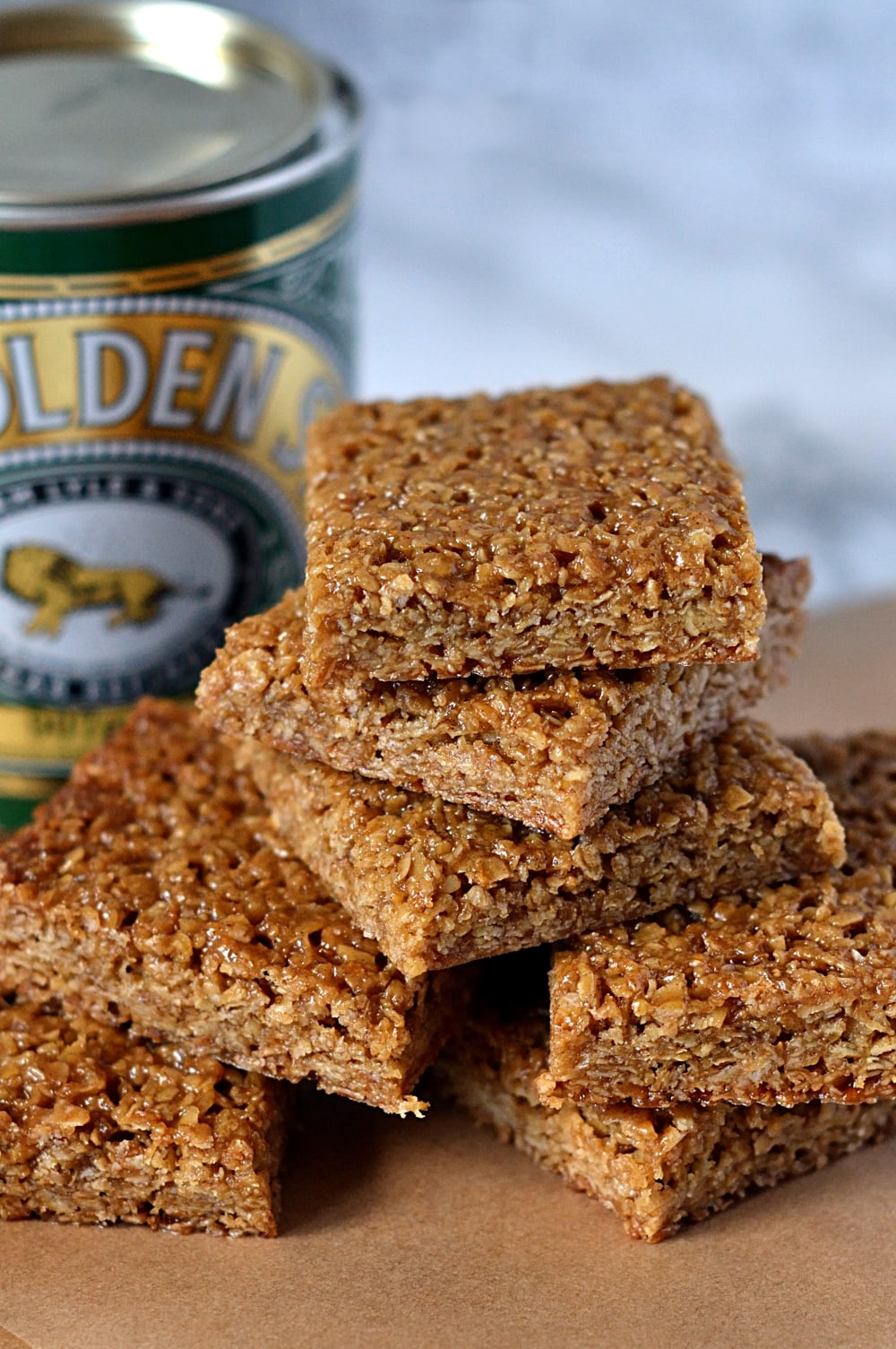

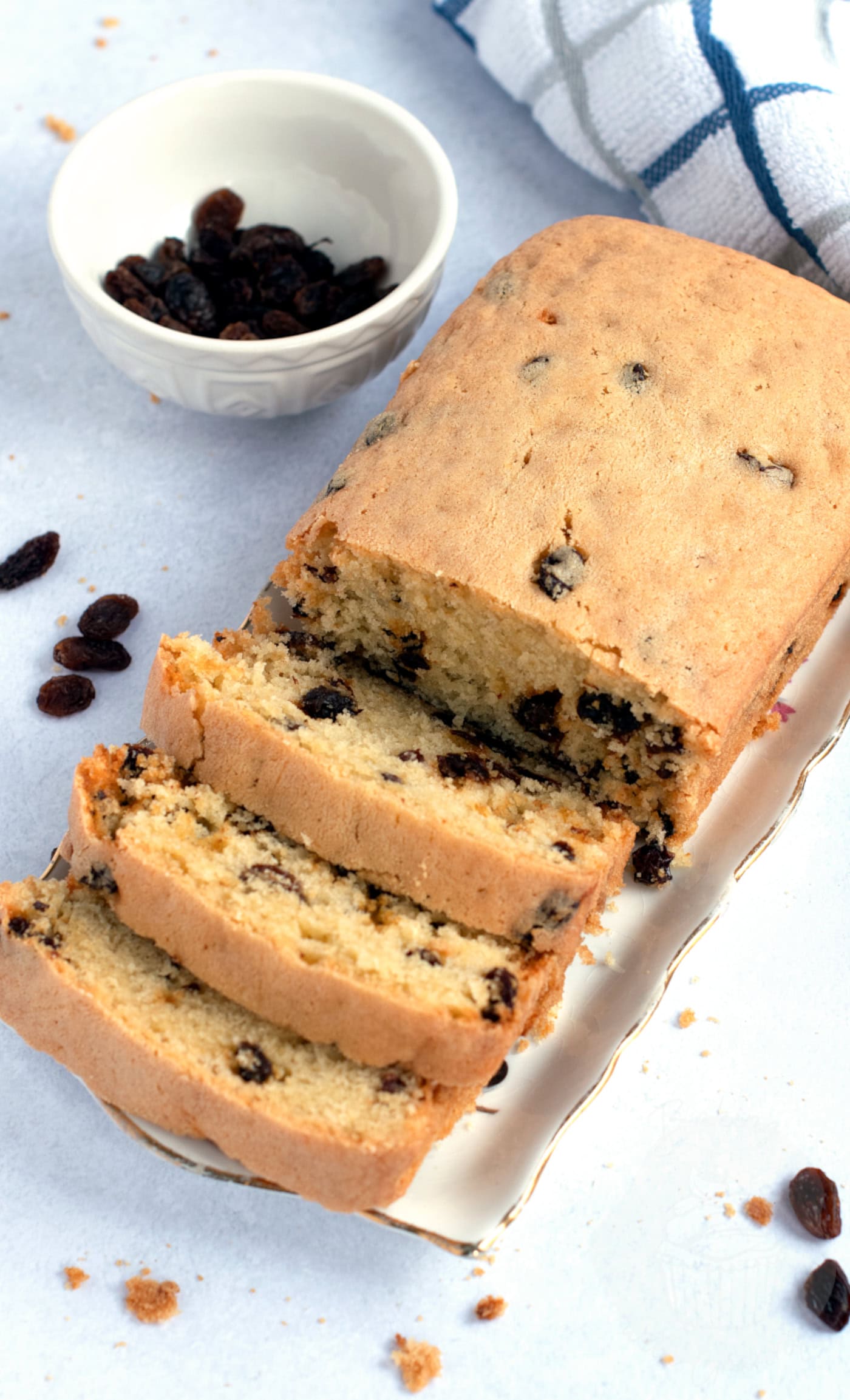
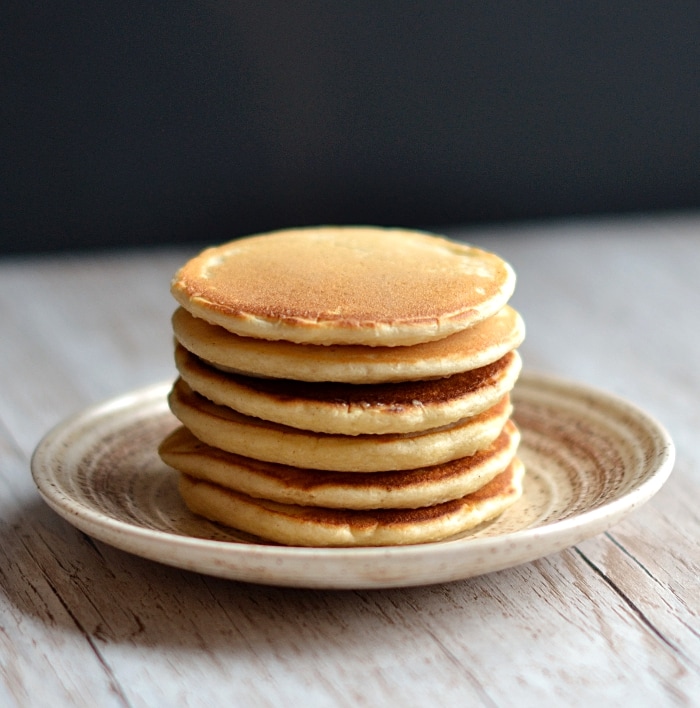
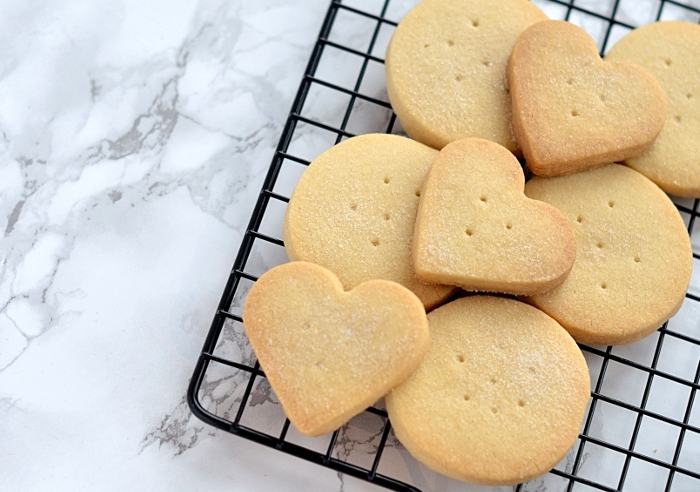








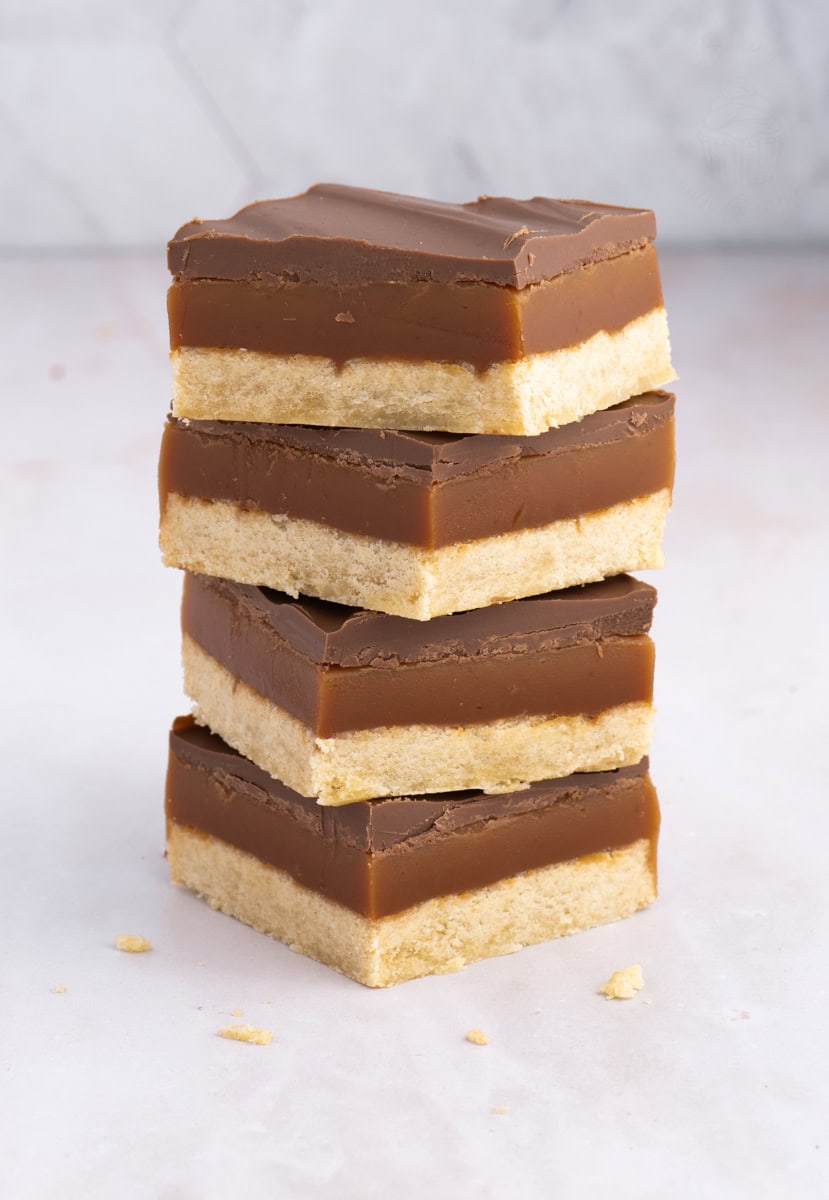

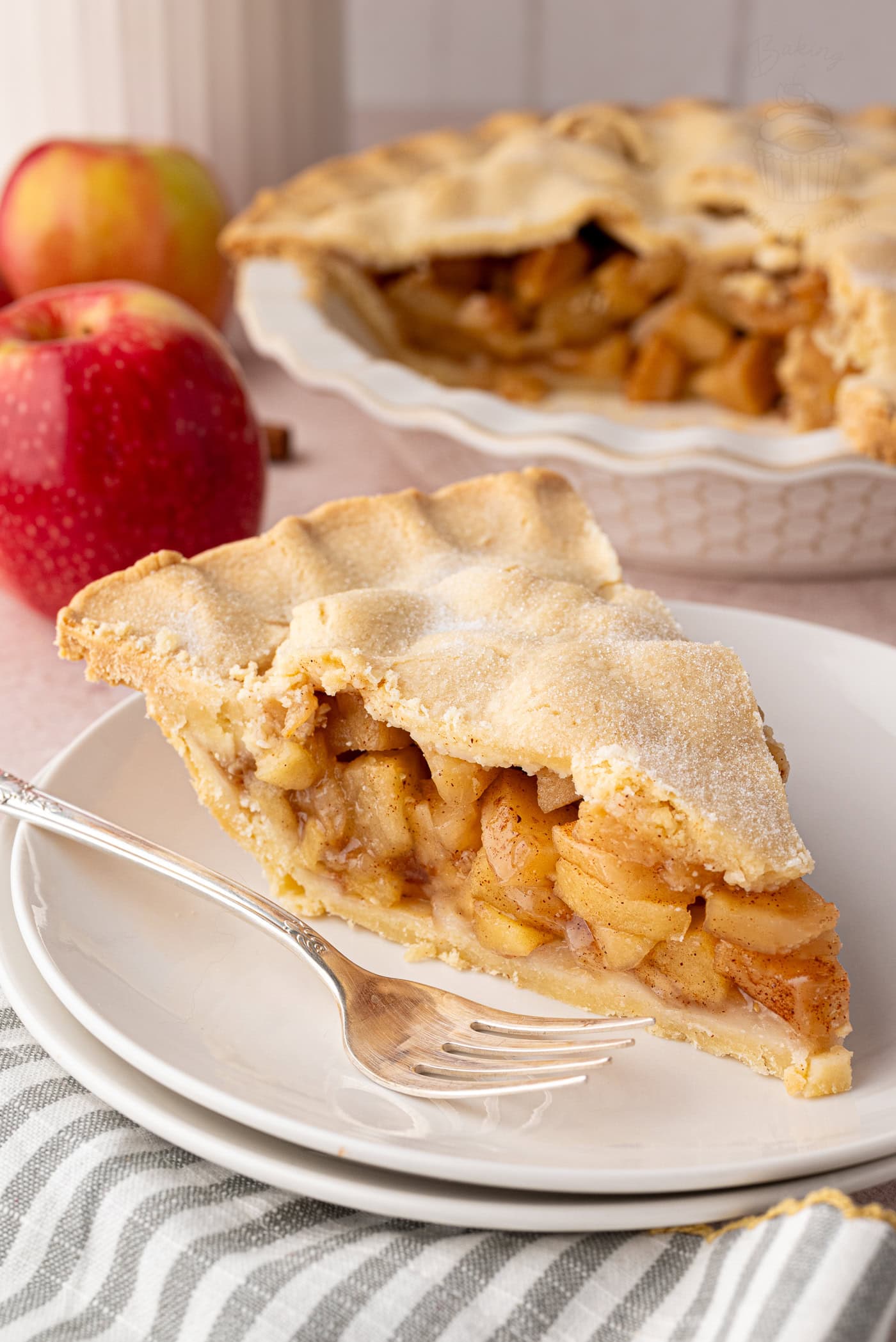


3 responses
I have always used my ma’s 1, 2, 3 recipe. However I have made shortbread with gluten free flour. Results tastes fine but is very soft and tends to crumble rather than holding together, People it was made for were delighted however.
Amy, can I use ground rice instead of cornflour?
Thanks